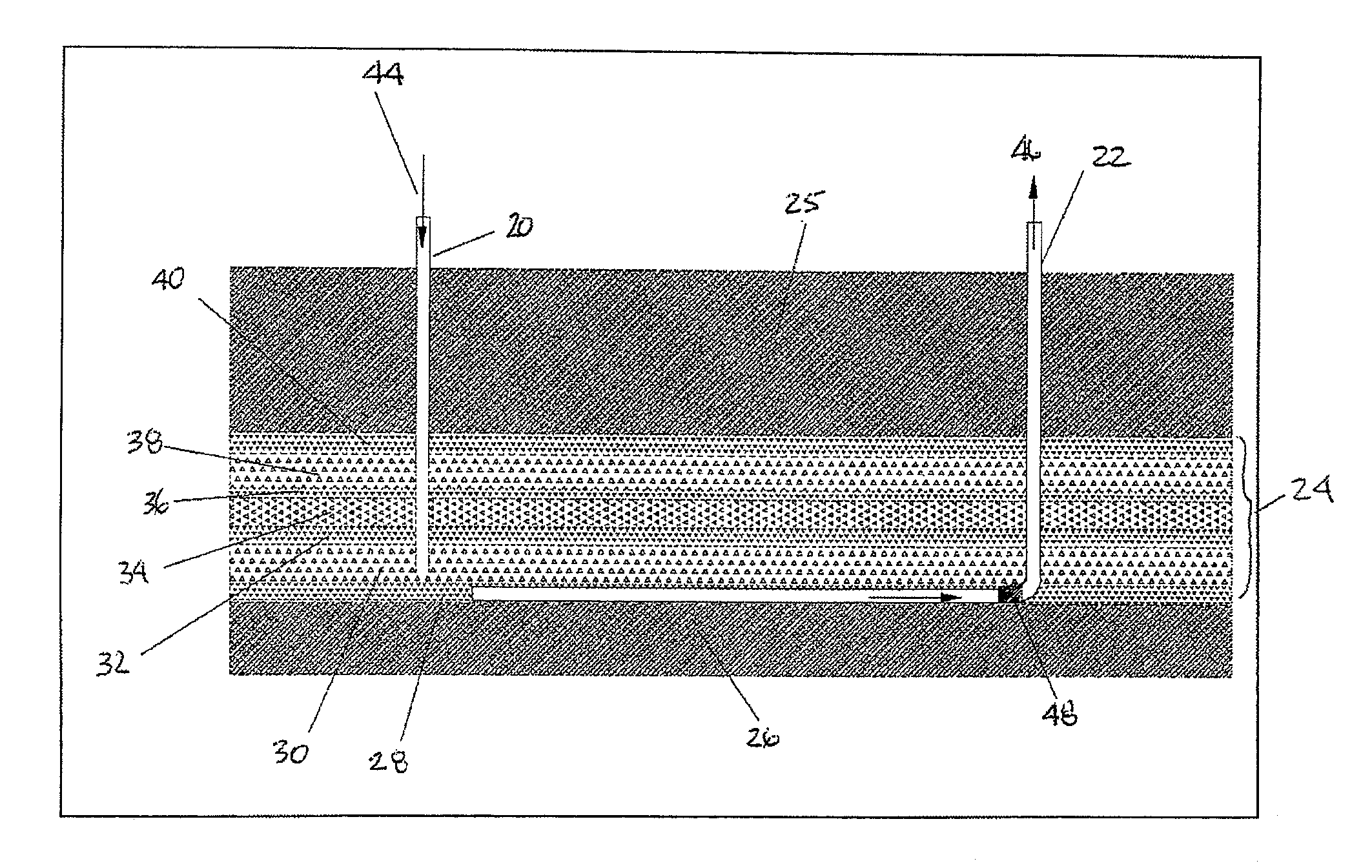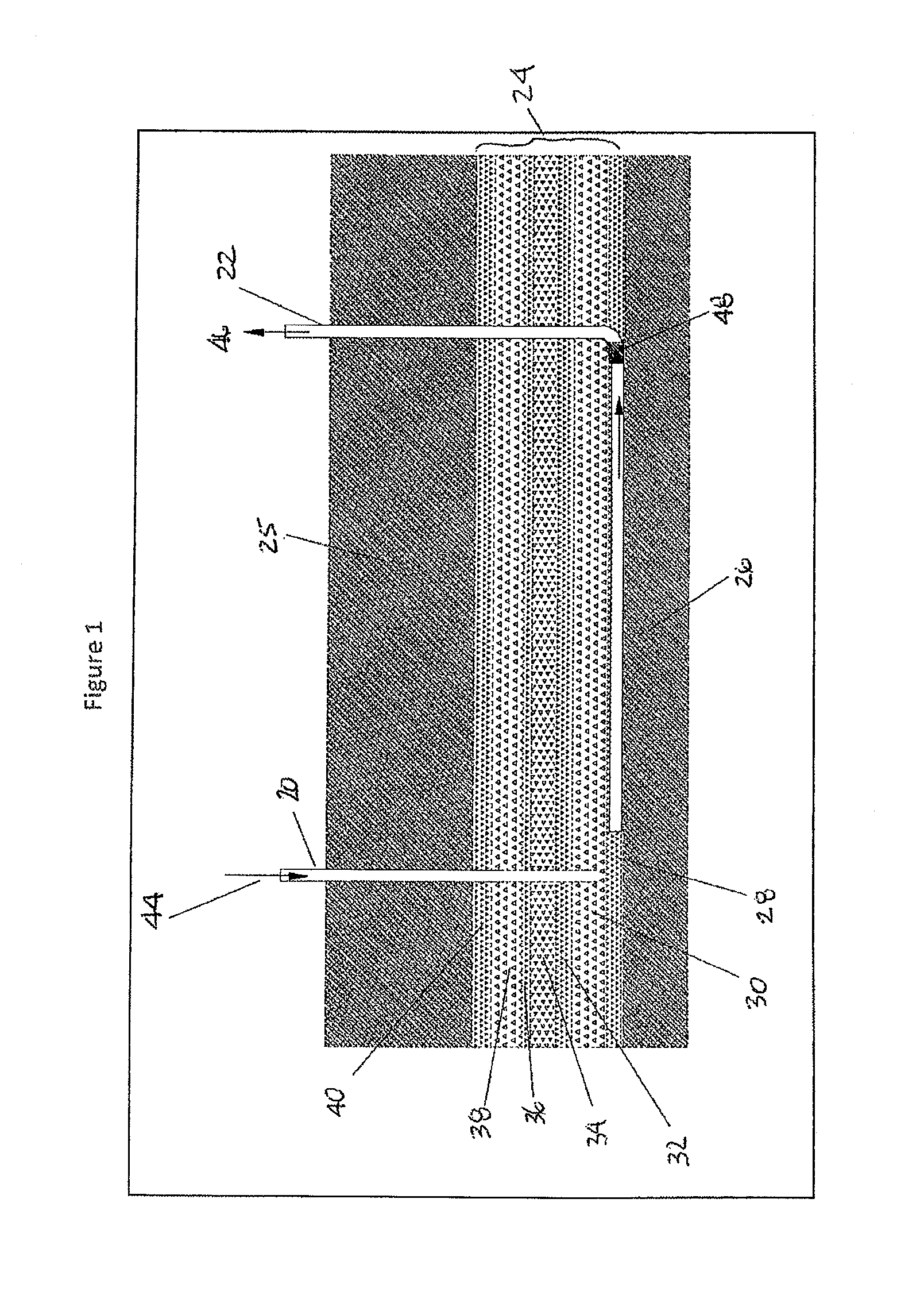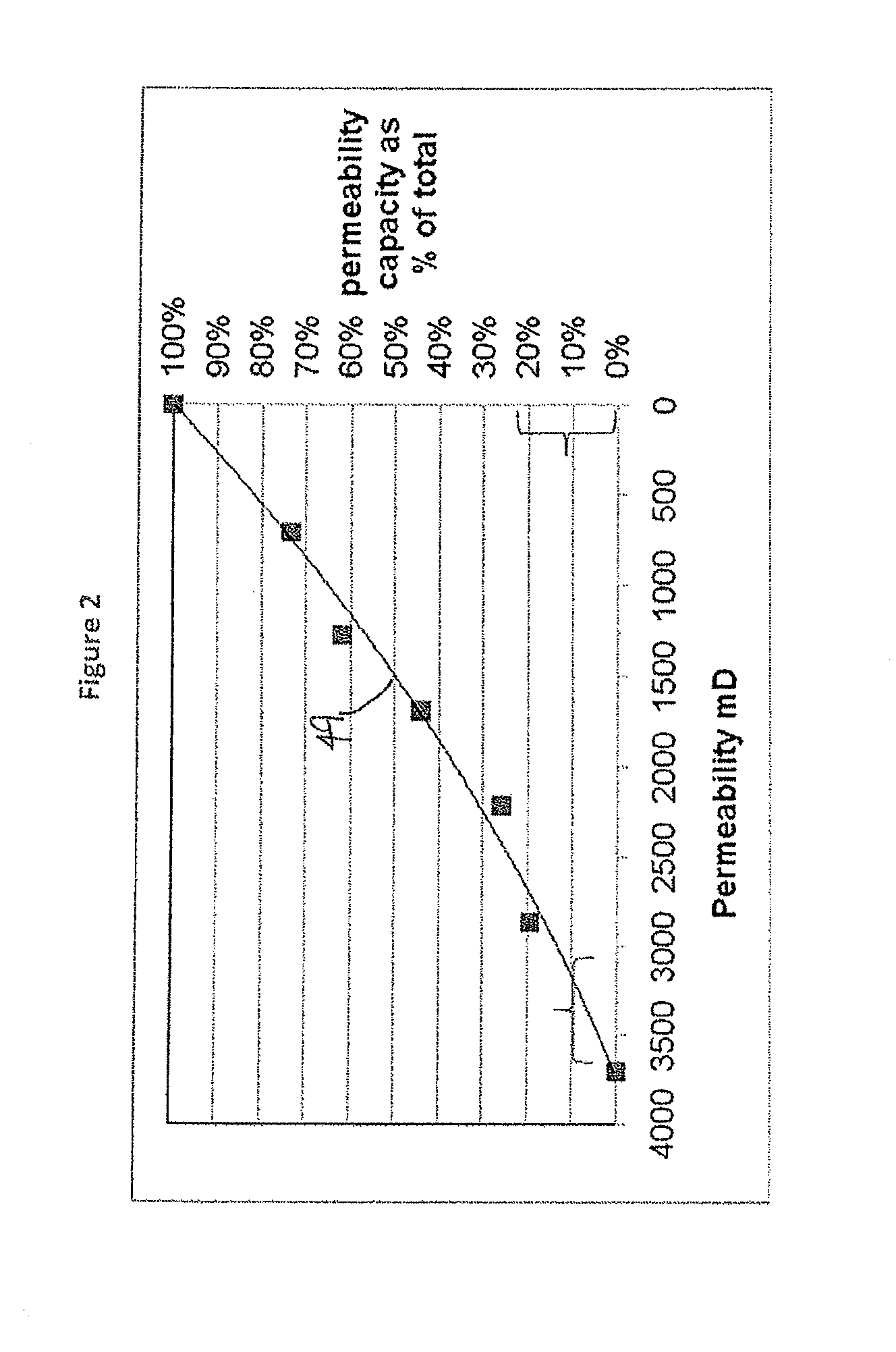Multi-step solvent extraction process for heavy oil reservoirs
a multi-step, heavy oil technology, applied in the field of hydrocarbon extraction, can solve the problems of limited solvent dilution rate into stranded oil on a reservoir wide basis, extremely slow initial penetration of solvent into oil, etc., and achieve the effect of rapid dilution of partly diluted oil, effective and predictable mobilization
- Summary
- Abstract
- Description
- Claims
- Application Information
AI Technical Summary
Benefits of technology
Problems solved by technology
Method used
Image
Examples
Embodiment Construction
[0035]This present invention is most applicable to heavy oil reservoirs which have undergone a primary extraction and also which demonstrate good confinement. According to the present invention the primary extraction has resulted in an oil extracted region in the reservoir having either gas or water filled voids. A preferred reservoir has had a primary extraction which has recovered between about 5% and 25% of the original oil in place with a most preferred amount being between 8% and 15%. Most preferably a suitable target reservoir will have a significant pay thickness without extensive horizontal barriers so that when the viscosity of the in situ heavy oil is sufficiently reduced, gravity drainage can occur. While a primary extracted reservoir is preferred the present invention is also suitable for virgin reservoirs of the type having naturally occurring drainable voids having a volume of between about 5% and 25% of the original oil in place. An example of such a reservoir is one ...
PUM
 Login to View More
Login to View More Abstract
Description
Claims
Application Information
 Login to View More
Login to View More - R&D
- Intellectual Property
- Life Sciences
- Materials
- Tech Scout
- Unparalleled Data Quality
- Higher Quality Content
- 60% Fewer Hallucinations
Browse by: Latest US Patents, China's latest patents, Technical Efficacy Thesaurus, Application Domain, Technology Topic, Popular Technical Reports.
© 2025 PatSnap. All rights reserved.Legal|Privacy policy|Modern Slavery Act Transparency Statement|Sitemap|About US| Contact US: help@patsnap.com



